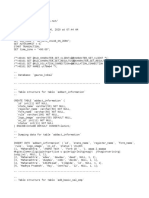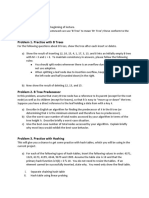0% found this document useful (0 votes)
20 views3 pagesData Analytics
Data analytics is essential for organizations to extract value from the vast amounts of data generated in the digital era, enabling informed decision-making across various sectors. The evolution from manual records to advanced AI-driven analytics has transformed how data is processed and utilized, with applications ranging from healthcare to finance. As data analytics continues to evolve, it presents both opportunities and challenges, making it crucial for businesses and individuals to embrace data-driven strategies.
Uploaded by
CV DesignerCopyright
© © All Rights Reserved
We take content rights seriously. If you suspect this is your content, claim it here.
Available Formats
Download as DOCX, PDF, TXT or read online on Scribd
0% found this document useful (0 votes)
20 views3 pagesData Analytics
Data analytics is essential for organizations to extract value from the vast amounts of data generated in the digital era, enabling informed decision-making across various sectors. The evolution from manual records to advanced AI-driven analytics has transformed how data is processed and utilized, with applications ranging from healthcare to finance. As data analytics continues to evolve, it presents both opportunities and challenges, making it crucial for businesses and individuals to embrace data-driven strategies.
Uploaded by
CV DesignerCopyright
© © All Rights Reserved
We take content rights seriously. If you suspect this is your content, claim it here.
Available Formats
Download as DOCX, PDF, TXT or read online on Scribd
/ 3


















































































